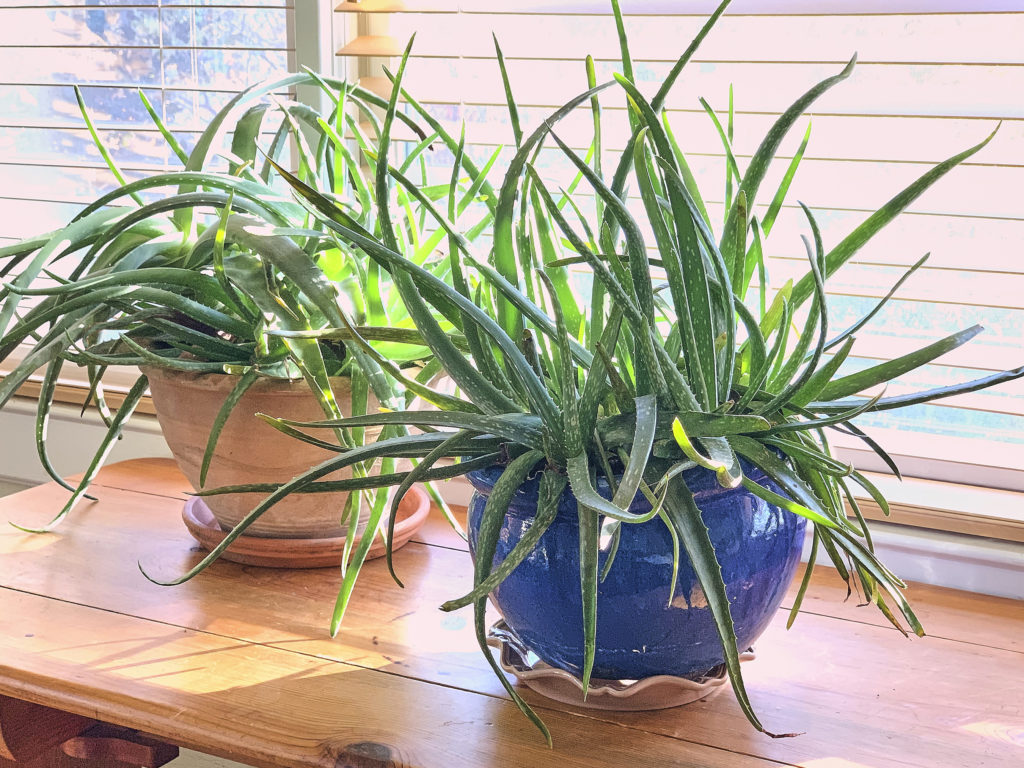Alabama Gardener – January 2022

Aloe vera. Grandma always had one in the kitchen. She may have squeezed a little aloe gel straight from the leaf to dab on your boo-boo and her burned finger, too.
The gel inside aloe vera leaves has been used around the world for centuries for its healing and cosmetic properties.
According to the National Institute of Health, the gel is 99% percent water, but it’s the other 1% that makes it special. The plant has up to 75 active compounds including vitamins, enzymes, minerals, sugars, lignin, antioxidants, salicylic acid (active ingredient in aspirin) and amino acids. No wonder Cleopatra had some on her dresser.
Today, aloe vera is easily found for sale in garden center greenhouses. Even grocery stores carry it because succulents, which include aloe, are among today’s trendiest plants.
Succulents are plants with thick fleshy leaves that hold moisture and are well adapted to long periods of time without water. They often have interestingly shaped leaves — like the tapered toothed and fleshy leaves of aloe. They make pretty houseplants and are well adapted to the dry environment indoors. Much has yet to be studied about aloe’s modern medical applications, but most of us are happy to dab a little gel on our cuts, burns and skin irritations. It’s also an ingredient in natural skin care products.
Aloe vera (Aloe barbadensis miller) is easy to keep in a kitchen window or any bright window or sunroom. Ours stays on a plant stand on the deck during warm weather but must come inside in fall because it’s killed by freezing weather. Light shade is best outdoors, but it will withstand full sun, which gives the leaves a reddish cast. Indoors, a sunny, south-facing window is best. In coastal Alabama, plants may survive a mild winter planted in the ground if protected by a cold frame or frost cloth, but the soil must drain well. Good drainage is essential in a container, too.
Plants are sold in sizes that typically vary from 4-inch pots to gallon containers. Pot new plants into a container (with a drainage hole) filled with cactus mix or homemade mix of one part sand and three parts potting mix for excellent drainage. The quickest way to kill aloe is soggy soil. Plants like being slightly pot bound, so choose a pot size that leaves only an inch or so of space around the root ball. Plants don’t need much fertilizer, just a little liquid food a couple of times during spring and summer. In winter, growth slows down. Water only when the soil dries out. It’s a perfect plant for a porch in summer because it doesn’t need much attention.
As the plants grow, the pot will fill with offshoots that are easy to propagate, so you can make more plants to share. Eventually the plantlets, or “pups,” it sends out from the base of the plant can be separated from the mother plant and rooted in a new container to share with friends.
Aloe is a great gift, not just for gardeners, but for cooks, too! To extract the gel from the leaf, simply clip off a little piece of the succulent leaf and squeeze.
